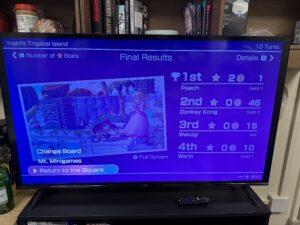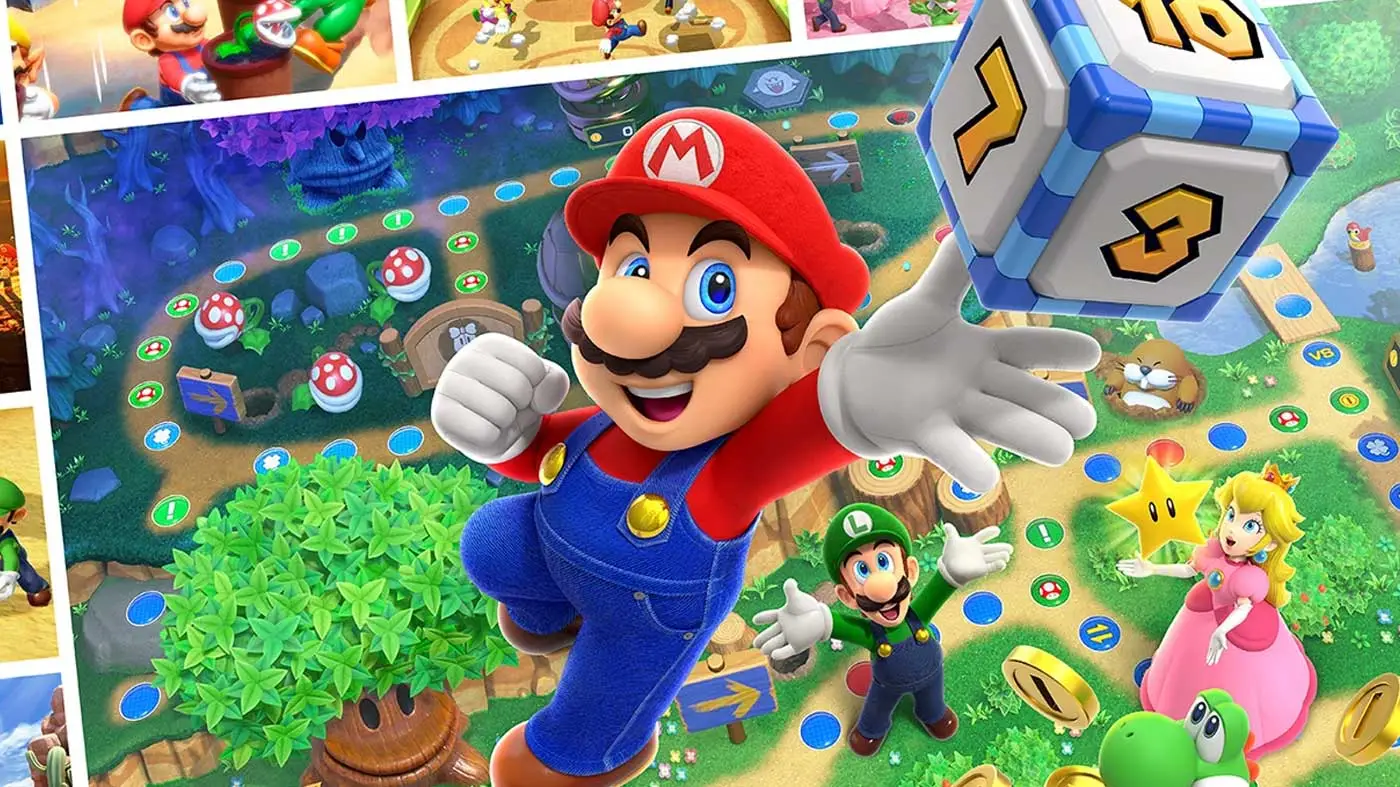My group’s game (The Hippodrome) is a Greek god themed and involves two teams. Every round, each team sends one player (or “champion”) forward to compete against the other team’s champion in a minigame. Since our game focuses on around a dozen mini games, I looked for games that involve minigames. I remembered playing Mario Party as a kid and thought it would be perfect since it centers around dozens of mini games. I played Mario Party, and overall, I had a blast. Mario Party is made by Nintendo and is meant to be played at parties, with parties of people. There are tons of different platforms to play on, but I played on the Nintendo Switch. I actually played with six people, but three people shared a controller and decided to take turns.
Mario Party has a few interesting elements that make it unique. First, there are only 4 players allowed, and every player is trying to accomplish the main objective: finish with the most stars. There are only two resources: coins and stars. Stars can be bought by coins, and coins are collected by completing minigames. The rules are very basic; 4 players are dropped onto the map (which is just a board game), and take turns rolling a die and moving across the board game space, trying to collect the most coins and stars until their turn number runs out. These elements make it extremely similar to another Nintendo game, Mario & Sonic at the Olympic Winter Games. In M&S, players collect stars through winning mini games (Olympic themed), rather than in Mario party, the mini game themes widely vary. Also, it has a 4 player max and has the exact same resources (coins and stars).
I had a ton of fun playing. It was super competitive but was still light-hearted. One mechanic that caught my attention and made the endgame super interesting is the “stealing stars” mechanic. Towards the end of the game, players have the option to steal other players’ stars, potentially altering the course of the game and its outcome. This leads to a tricky and potentially dangerous dynamic: not buying stars until the end. This dynamic can turn out two ways: if you wait until the end to buy stars, you could miss your chance to buy enough or any stars, or get them all stolen before the game ends. This dynamic leads to a very secretive, toxic, and tricky aesthetic that ends up being really fun. Does waiting until the end pay off or will you get all your stars stolen – a question I had to ask myself several times. I ended up buying a star on my last turn, and got it stolen immediately after, which sent me to last place!
One element that really confused me was the cap at four total players. It’s called Mario Party, so I expected that it could be playable at a party, which typically have more than 4 people. We had six players, so three people had to share a controller and take turns, which was kind of a let down. Adding more players would just increase the tension between everyone, making it possible to team up and create mini factions/alliances with certain players. By limiting the player cap at 4, Nintendo is preventing that dynamic, decreasing the potential for fellowship and lowering the challenge level.







